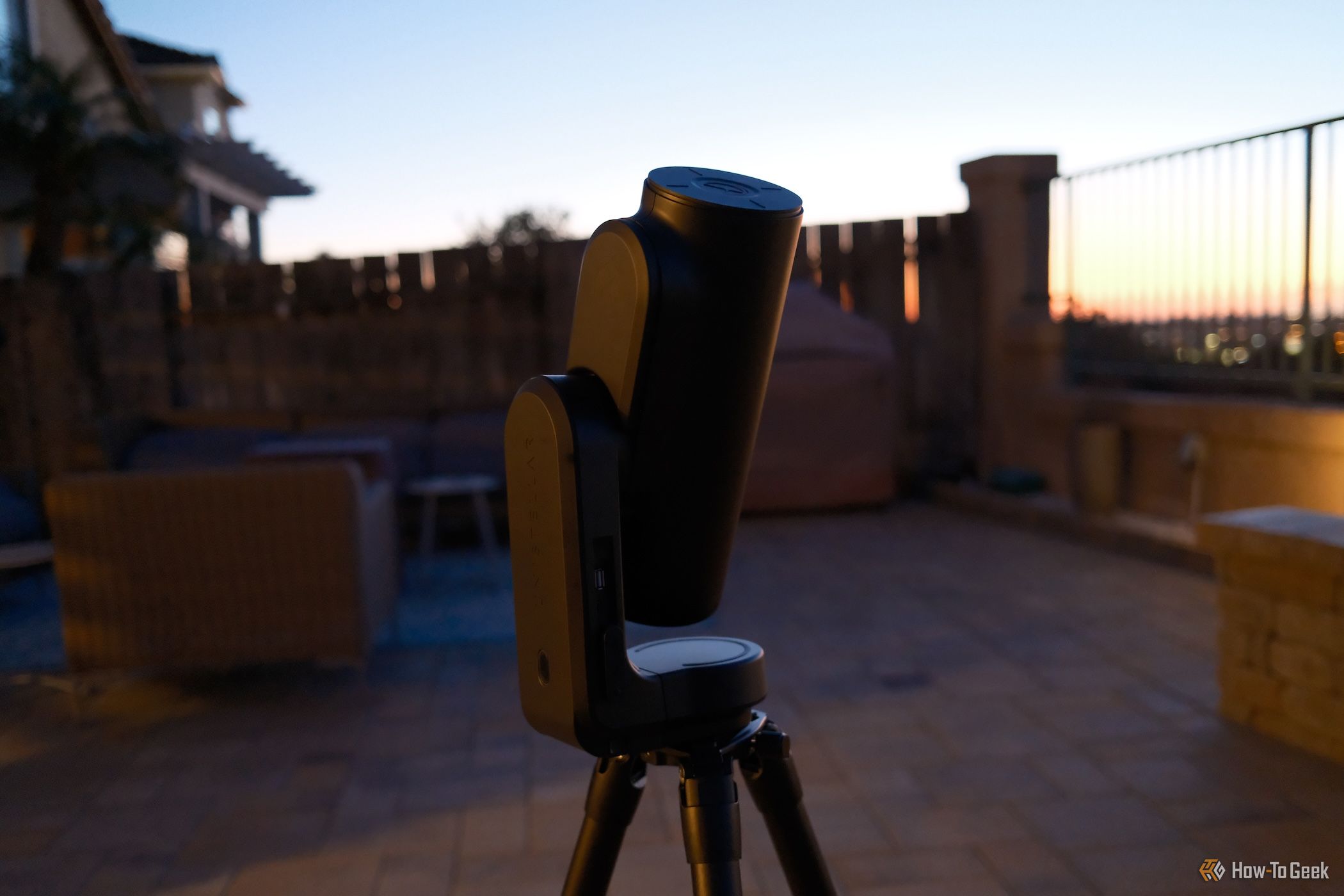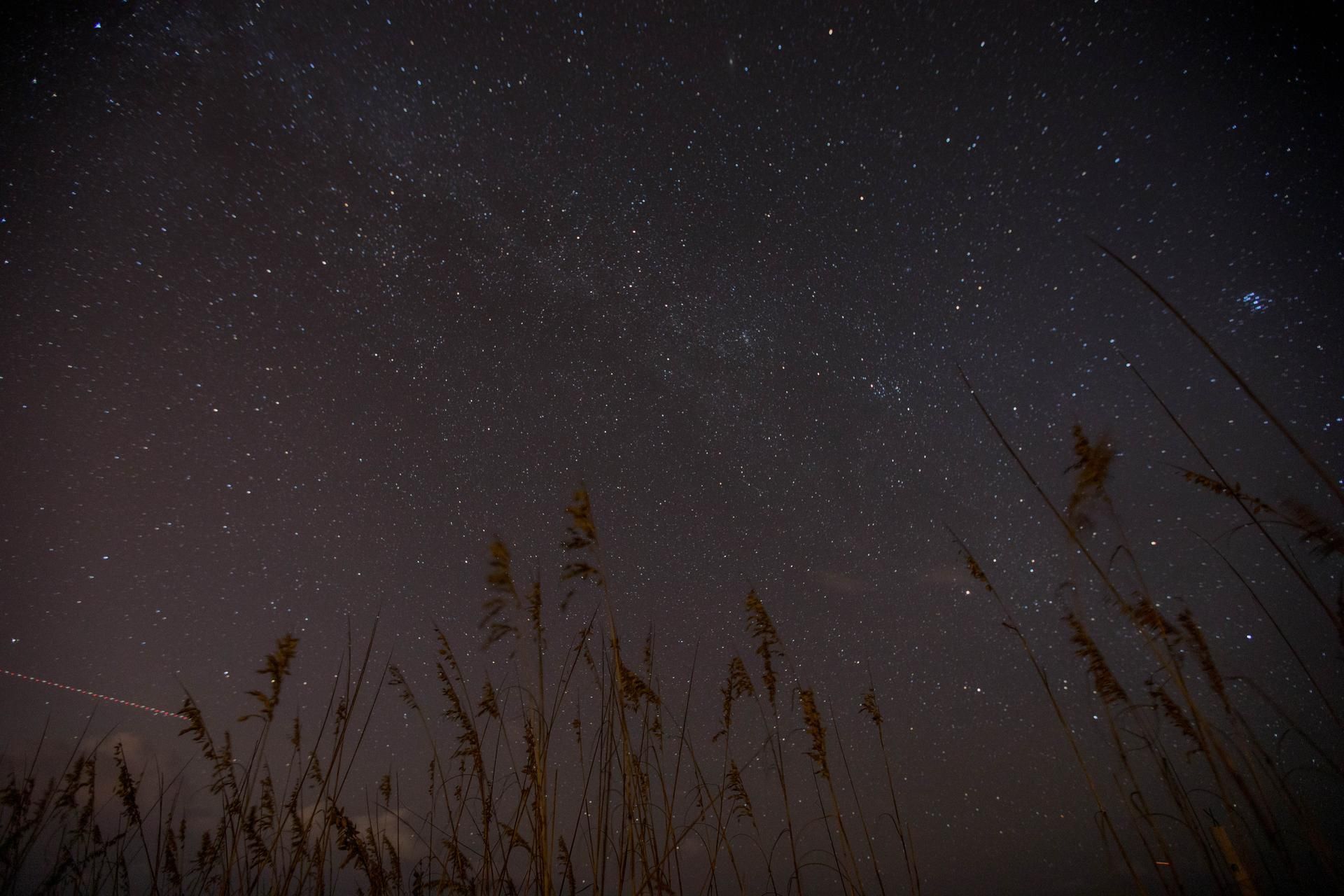I was an adult with kids of my own before I camped outside for the first time. But when the time came, thanks to a tent with a transparent mesh top, I learned quite a bit as I lay there looking up at the night sky.
6
Darkness Isn’t as Dark as You First Think
I grew up out in the sticks. When I looked outside my window, all I saw was pitch black. It was intimidating.
As an adult, I chose to settle down in a different rural corner of Virginia, and nighttime still feels quite dark. Yet now that I’m older, and bigger, I don’t find this as scary as I once did. Now when I step outside at night, I’m struck by how gorgeous the night sky is.
Many of us are conditioned to see an area as dark if it’s night time and there are no lights around. But light bulbs are only one type of light source, and the sky is filled with countless others. This light trickles down. It’s reflected off surfaces. It reveals a world around us that we can see just fine if we stop using our smartphone flashlight long enough to try.
5
You See More Stars as Your Eyes Adjust
The sky and the surrounding darkness have a way of becoming clearer if you give your eyes time to adjust. What looks pitch black from a window actually has incredible detail when you step outside and turn out the light. When you stay outside for a half hour, or an hour, you find you can see much of the landscape you couldn’t before.
When gazing up at the stars, the stars you see at first aren’t the only stars you will see. The longer you stay outside, as your eyes adjust to the darkness, more stars start to come into view. Without reaching for a telescope or even pulling out binoculars, you might be surprised by just how much you can see. This is one of the top tips for beginner stargazers to keep in mind.
As you stay outside in a dark area, your pupils dilate. They get larger to take in more light. Your rods and cones, the cells in your eyes responsible for detecting light, also undergo changes to make your vision in the dark more acute. Together, it’s like adjusting the aperture and cranking up the ISO in photography.
On cold nights, it can be tempting to quickly set up a telescope, peek through it, and head back inside. The best stargazing, though, takes time.
4
The Phase of the Moon Determines How Bright It Is
Even once your eyes are fully dilated, you’re still working with the light that’s there. On a cloudy day when you can’t see stars, it’s going to be pretty dark. Yet when the skies are perfectly clear, how much light there is will vary depending on the state of the moon.
If it’s a new moon, don’t expect much light. This isn’t a bad thing, since it means you’ll see stars more clearly. If there’s a full moon, it can get pretty bright outside. I was surprised one night by how bright it was to have a full moon on a snowy day. The bright light reflecting off the white ground meant I could see almost as far into the tree line behind my home as I could during the day.
You can often know in advance what the moon will be like by checking a weather app. Alternatively, you can buy a physical calendar that marks the moon’s phases for you. Unlike the weather, there’s nothing unexpected or unpredictable about where the moon will be. Either way, you’ll want to educate yourself on the various moon phases and what they’re called.
3
We’ve Put a Lot of Stuff Up There
We’ve launched many things into space. We send even more stuff into the sky, day and night. When everything above you is a bright white dot, it’s not uncommon to think you’ve spotted an exciting bit of astronomical goodness, only to see the tell-tale flashing lights. Nope, it’s just a plane. That one over there? Also a plane. They never stop coming, really, especially if you’re within short driving distance of a city.
Occasionally you do manage to spot something a bit higher up. Sometimes you might actually find yourself looking at a satellite or even the international space station.
How do you know you aren’t looking at a shooting star? Meteors move so quickly that they resemble a line more than a moving dot. If you go outside during a meteor shower, you’ll see numerous streaks shooting across the sky.
2
I See How Stars Could Be Used for Navigation
Back in the days before satellite navigation, or even paper maps, people could tell where they were by following the stars. This seemed like magic when I first read about it in a story or history book. When I spent a night under the stars, it started to make sense in a visceral way.
The stars form a landscape of their own. While the moon and planets change places, stars are consistent. The North Star, also known as Polaris, gets its name because it sits almost exactly above Earth’s North Pole in the Northern Sky. If you can determine what direction is north, you can determine all the other directions.
The North Star isn’t the easiest to pick out for the unfamiliar, but you can use other stars instead. If you know what direction the Little Dipper is from where you are, you can work with that. Fun fact: the North Star is at the tip of the handle of the Little Dipper—congrats, now you can spot both! But we’re just getting started. From there you can easily hop to other amazing constellations.
1
We’re Never as Alone as We Think We Are
When you spend the night under the stars, your eyes aren’t the only body part making an adjustment. Your ears grow more sensitive as well. Sounds that might otherwise fade into the background during the day slip into the foreground.
As I lay in my tent, I became hyper-aware of any animal I heard nearby. I had not only a gauge when a vehicle was going by, but also its size. I could hear wind in the leaves on the tree branches above. I could hear the buzzes, chirps, and songs of bugs.
Turns out, even on the stillest of nights, we’re surrounded by so much activity. At first, this was intimidating. So much was unfamiliar. Over time, it felt comforting. Even if the people I knew nearby were asleep, I was hardly alone in the world.
Spending a night under the stars can change you. Not only does the unknown become less frightening, but it can make you fall in love with stargazing, even if you have to deal with light pollution.





